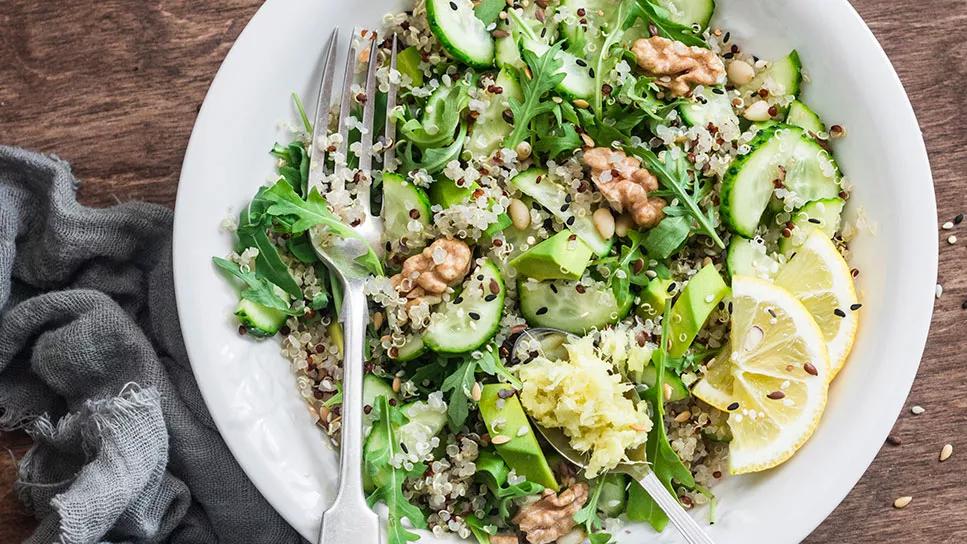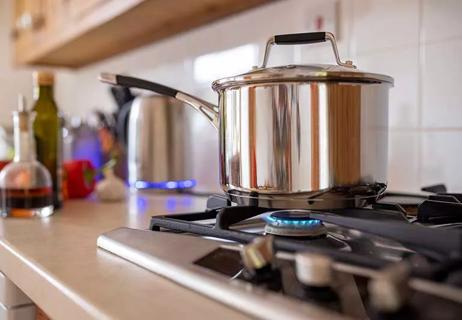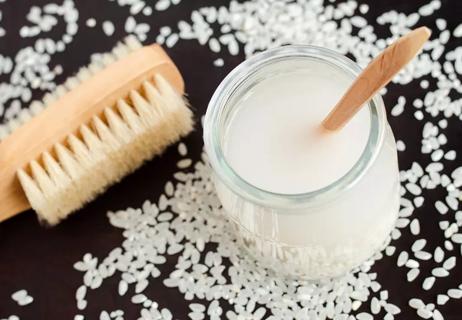Advertisement
Ground flaxseed is full of heart-healthy omega-3s, antioxidants and fiber, and easy to add to just about any recipe

“Superfoods” seem to go in and out of fashion faster than you can press “start” on your blender. Case in point: flaxseed. It’s one of many once-viral foods that saw a meteoric rise on social media and then dropped off the radar.
Advertisement
Cleveland Clinic is a non-profit academic medical center. Advertising on our site helps support our mission. We do not endorse non-Cleveland Clinic products or services. Policy
But just because your favorite social media influencers have stopped raving about flaxseed doesn’t mean you should leave it behind.
“Flaxseed has many nutritional benefits,” says registered dietitian Julia Zumpano, RD, LD, “and there are many reasons to add it to your diet.”
Flaxseed, also known as flax or linseed, is the seed of the flax plant. It comes in colors ranging from reddish brown to light yellow (usually referred to as golden flaxseed) and can be consumed as a whole seed, ground powder or flaxseed oil.
“When flaxseed is ground or milled, it’s easier for your body to absorb its nutrients,” Zumpano explains. “This is called bioavailability.”
There’s lots to love about flaxseeds. They’re full of both fiber and protein, and they’re also a good source of omega-3 fatty acids and lignans, a type of polyphenol that helps boost your heart health.
In fact, flaxseed is so good for you that its nutritional benefits outweigh its calories, Zumpano notes. In each 2-tablespoon serving, ground flax provides:
“Because it’s so-nutrient dense, I suggest not being concerned with the calories and fat, and the carbs are mainly from fiber, which isn’t digested or absorbed,” Zumpano clarifies. “It’s so beneficial that the calories don’t matter.”
Want to know more? Let’s dig deeper into the benefits of adding flax to your diet.
Advertisement
Flax is chock-full of alpha-linolenic acid (ALA), a type of fatty acid that benefits heart health. Fish is famously the best source of omega-3s, but some plants also pack an ALA punch.
“Flax is actually the richest plant source of alpha-linolenic acid in the North American diet,” Zumpano says. That makes it a great choice for vegetarians and omnivores alike.
Lignans are a type of phytoestrogen, a group of compounds that are linked to a lower risk of developing conditions like osteoporosis, heart disease and breast cancer. Lignans also have antioxidant properties.
“Antioxidants are naturally occurring chemicals in foods that protect your cells from damage,” Zumpano explains. A diet rich in lignan may help ward off diseases like heart disease and cancer — and flaxseed happens to contain 75 to 800 times more lignans than other plant foods.
Soluble fiber can help you feel fuller for longer — and flaxseed is full of it. “Flaxseed is an excellent source of soluble fiber, which forms a gel when it’s combined with water and slows down digestion,” Zumpano further explains. Fiber can also help:
Similar to soybeans, flaxseeds are a good source of high-quality plant protein. Like other seeds, they’re considered an incomplete protein source, which means they don’t contain all nine essential amino acids — but that doesn’t mean they’re not a great addition to your diet. Just be sure you’re getting protein from other sources, too, to get a balance.
Potassium is a mineral that’s important for cell and muscle function and helps maintain normal blood pressure. But many Americans don’t get enough of it in their diets.
“Flaxseed has more potassium than bananas, which are famously rich in potassium,” Zumpano shares. How a-peel-ing!
One serving of flaxseed has 10% of your daily recommended amount of thiamine (sometimes, spelled thiamin), also known as vitamin B1. B vitamins help your body turn food into energy.
Advertisement
Most people can benefit from adding flaxseed to their diets, but talk to a healthcare provider first if you have any of the following conditions:
Flax comes in several forms. Before you start adding this superseed to your diet, you need to know the difference between them, both functionally and nutritionally.
Although whole flaxseed has the longest shelf life, it’s hard for your body to break down, which means it isn’t a great choice for consumption.
“You’ll have to grind it in a food processor or coffee grinder first,” Zumpano instructs. “Otherwise, all those nutrients will go in one end and out the other.”
You can buy pre-ground or milled flaxseed from the store to save yourself the time and energy of grinding your own. But there’s a pretty big catch.
“Ground flax has a much shorter shelf life than whole seeds,” she continues. “When it’s past its prime, flax becomes rancid. It will have a sour smell and bitter taste.”
Be sure to check expiration dates and only buy as much as you can use before it expires. You can usually store ground flax in the fridge for up to a year, as long as it’s in an airtight container. Or throw it in the freezer if you don’t think you’ll use it up in time. Ground flaxseed has about a three3-month-month shelf life.
Finally, there’s flaxseed oil, which is full of fatty acids, but it doesn’t have the fiber that flaxseed does.
“It’s a convenient way to boost your omega-3 intake, but it just doesn’t contain all the goodness of ground flax,” Zumpano says. “Plus, it has an even shorter shelf life, so keep an eye on the use-by date.”
Advertisement
Ready to start reaping the benefits from this little seed? Zumpano recommends aiming for about 2 tablespoons of seeds a day.
But you might not want to start with that amount right out of the gate. Like any high-fiber food, it can make you feel bloated if you’re not used to it.
“I suggest starting with a teaspoon a day and working your way up to 2 tablespoons,” she advises.
Flax has a mild, nutty flavor that you often can’t even taste when it’s mixed into other foods. And you can add it to just about anything! Here are some ideas:
Here’s a fun fact: Flour made from flaxseed was used for bread-making as early as 1000 BC! If you’re making muffins, pancakes or any other baked goods, you can use ground flaxseed as a flour substitute: Just swap up to 3/4 cup of the flour in the recipe for flax. If a recipe calls for 1 cup of flour, for example, use half flour and half flax.
You can also use ground flaxseed to replace up to 1/4 cup of oil in a recipe. You can use it in a 3:1 ratio. If your recipe calls for 1 tablespoon of oil, use 3 tablespoons of flaxseed meal; if your recipe calls for 1/4 cup of oil, use 3/4 cup of flaxseed meal.
Not down for all that math? Just find a recipe that calls for ground flaxseed! Here are seven healthy, tasty options we love:
You can also use flaxseed to make a plant-based egg substitute. To replace an egg:
“This is a great way to use ‘eggs’ in vegan recipes,” Zumpano says, “and it can help you cut cholesterol from your diet.”
Advertisement
Learn more about our editorial process.
Advertisement

The essential nutrient can benefit your immune system, eyes and skin while lowering disease risk

Factors like temperature, energy levels and sleep quality play a role in determining whether working out in the morning or evening is best for you

Packed with fiber and other nutrients, zucchini can boost your immune system and help you cut calories

Sourdough can be healthier than some other bread choices — but that doesn’t give it ‘health food’ status

The best food choices for gastroparesis are low in fat and fiber

This spicy root helps fight cancer, bacteria and inflammation

The meatless, plant-based eating style has countless tasty and healthy options

Packed with fiber and nutrients, this flower — yep, flower! — is great for your blood sugar, heart and gut

Focus on your body’s metabolic set point by eating healthy foods, making exercise a part of your routine and reducing stress

PFAS chemicals may make life easier — but they aren’t always so easy on the human body

While there’s little risk in trying this hair care treatment, there isn’t much science to back up the claims